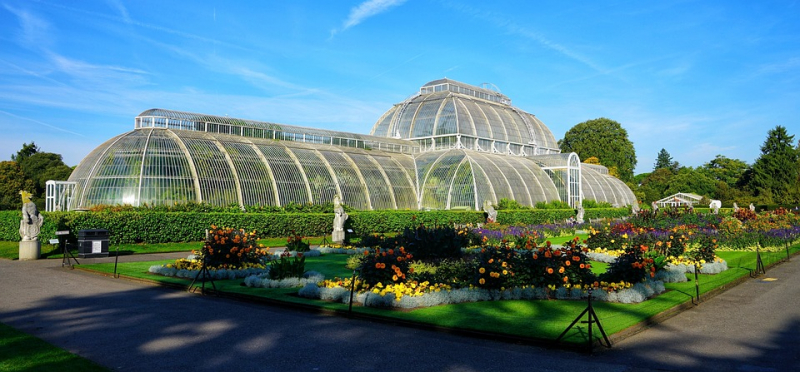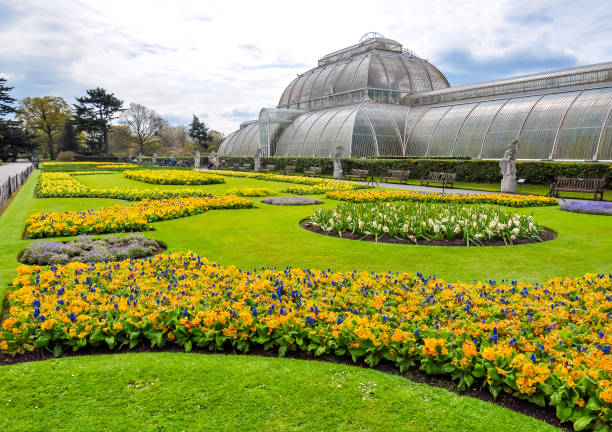Palm House at Kew Gardens
According to experts, Kew's Palm House is the world's most important surviving Victorian iron and glass edifice. It was built to house the exotic palms that were being collected and imported to Europe in the early 1800s. The project was groundbreaking since it was the first-time engineers employed wrought iron to span such wide spans without the use of supporting columns. This method was adapted from the shipbuilding industry; from a distance, the glasshouse seems to be an overturned hull. As a consequence, there was a huge, bright, high area that could easily fit the tops of large palm trees.
The Palm House was the first large-scale glasshouse constructed. It was built in 1844 by Richard Turner following Decimus Burton's plans. To realize the ambitious concept, architects adopted technology from the shipbuilding industry, which may explain why the Palm House resembles an overturned hull of a ship. Inside the Palm House, you may go to the depths of the rainforest, where the air is thick and packed with lush flora. As you go through, you'll come across rainforest gems like the world's oldest pot plant and the disease-fighting periwinkle. Many of the plants in this collection are threatened or extinct in the wild. Others, such as the rubber tree, African oil palm, and cocoa tree, provide enormous value to cultures all over the world in the form of fruit, lumber, spices, or medicine.
Rainforest plants comprise only 2% of the world's surface yet account for 50% of all species, making them critical to the survival of life on Earth. The Palm House collection is used by Kew experts for research into medicine and sustainable agriculture. The Palm House, a living laboratory dedicated to the Earth's tropical areas, allows you to experience the wonder of the jungle firsthand.
Location: London, England











